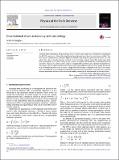Gravitational wave astronomy and cosmology
Author(s)
Hughes, Scott A
DownloadHughes_Gravitational wave.pdf (383.9Kb)
PUBLISHER_CC
Publisher with Creative Commons License
Creative Commons Attribution
Terms of use
Metadata
Show full item recordAbstract
The first direct observation of gravitational waves’ action upon matter has recently been reported by the BICEP2 experiment. Advanced ground-based gravitational-wave detectors are being installed. They will soon be commissioned, and then begin searches for high-frequency gravitational waves at a sensitivity level that is widely expected to reach events involving compact objects like stellar mass black holes and neutron stars. Pulsar timing arrays continue to improve the bounds on gravitational waves at nanohertz frequencies, and may detect a signal on roughly the same timescale as ground-based detectors. The science case for space-based interferometers targeting millihertz sources is very strong. The decade of gravitational-wave discovery is poised to begin. In this writeup of a talk given at the 2013 TAUP conference, we will briefly review the physics of gravitational waves and gravitational-wave detectors, and then discuss the promise of these measurements for making cosmological measurements in the near future.
Date issued
2014-10Department
Massachusetts Institute of Technology. Department of Physics; MIT Kavli Institute for Astrophysics and Space ResearchJournal
Physics of the Dark Universe
Publisher
Elsevier
Citation
Hughes, Scott A. “Gravitational Wave Astronomy and Cosmology.” Physics of the Dark Universe 4 (September 2014): 86–91.
Version: Final published version
ISSN
22126864